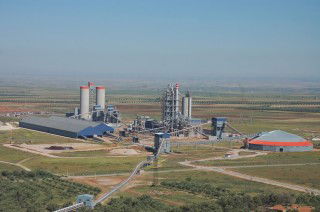Global cement and clinker trade will be seriously affected by the economic downturn caused by the coronavirus pandemic. There will be a global reduction in cement consumption. Seaborne cement trade and distribution will take an even larger hit. It is still too early to accurately forecast the reduction in seaborne cement and clinker movements. What can be done, however, is to look at the economic mechanisms behind trade and distribution, and use this as a tool for a general forecast. We also have to realise that behind the COVID-19 crisis the climate crisis is still waiting. By Ad Ligthart and Marcia Ligthart, Cement Distribution Consultants, The Netherlands.
In 2019 the total seaborne volume of cement, clinker and cementitious materials was about 283Mt. Of this total, about 135Mt of cement and clinker was international movement and around 110Mt was transported domestically. In addition, approximately 38Mt of cementitious materials were traded by sea. Compared to global cement consumption of about 4.1bnt in 2019, seaborne trade and distribution was just six per cent of this volume.
